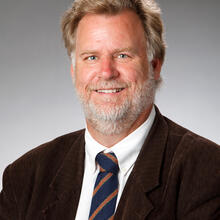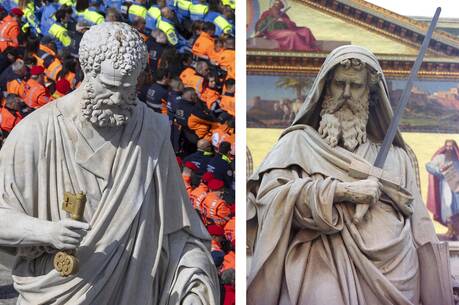The Master Builder
Jesus was a tektôn, or craftsman, by trade (Mk 6:3), someone who built things with wood, brick and stone. We do not know what types of physical structures he worked on with his father, Joseph, but we can speak of his spiritual legacy as the one who built the house of God. The master builder constructs the church.
We understand the artisan, the craftsman, the musician through the artifacts they leave behind. Surely it behooves us to think about the new Temple, crafted by Jesus for the family that dwells in the house of God. The First Letter of Peter tells us that Jesus himself is not just the builder, but the “cornerstone” of the new Temple. The members of God’s family are “like living stones,” who must let themselves “be built into a spiritual house.” The manner in which each stone of the church is shaped and formed is through the ongoing work of holiness.
And within the house built by Christ, we are co-contractors with the master builder in this ongoing project. Families grow and expand and so, too, must the house in which they live. This might require additional rooms, or it might require changes and development in relationships. Such work was needed even in the earliest church, as the Acts of the Apostles reports. Among the first members of the church, some Greek-speaking Jewish disciples (the Hellenists) were upset with the Hebrew-speaking Jewish disciples (the Hebrews), claiming that the widows of the Hellenists were being ignored in the daily distribution of food. The Twelve met with the Hellenists, and the apostles acknowledged that the complaints of the Hellenists had merit. The house needed to be put in order.
The family of God behaves like most families, and at the heart of family life is the sharing of meals that are at once material and spiritual. The table, the source of familial comfort and belonging, can also be the focal point of tension and rancor. Since the apostles needed to devote themselves to the word of God and not to service at table, they chose seven Hellenists to care for the distribution of the food to the growing church.
This account has traditionally been seen as the origin of the order of deacons, but even though the origin of the diaconate is certainly more complex historically, we have in this passage a genuine view of the house of God expanding in structure and in diversity to meet the needs of the growing family of faith. This new work was essential to serve the burgeoning church.
The church here on earth, founded on the cornerstone that is Jesus Christ, built with and by the “living stones” of those who make up the house of God, is always growing to meet the physical and spiritual needs of the family of God. The church is a house full of the wounded and the suffering, but it is also a place of joy. Yes, we bear our scars, just as our master builder does, in a home always under renovation, but this is a big house, in which all are welcome and called to the table.
Whatever our earthly flaws, we are working for the promise of the perfect home in God’s kingdom. It might seem too literal to concretize the spiritual and heavenly realm with the example of a building, but it is Jesus who speaks of the father’s oikia or “house” with “many dwelling places.” The image of a house is perfect because whether our families have lived together harmoniously or in various states of dysfunction, even of abuse, we all can imagine the perfect home. It is this home that speaks of the family of God at peace. The wood, bricks and mortar are concrete images that plumb the depths of our longing for a family home where all are welcome and safe.
We know our own building efforts are faulty and imperfect, but each of us builds with and is being built by the master builder as a member of this household of faith. As we build, we are also being shaped into “living stones” being made perfect for our eternal home. What has Christ the master builder built and what is he building? All of us, brick by brick, stone by living stone, are being shaped and formed to live forever in the house of God.
This article also appeared in print, under the headline “The Master Builder,” in the May 12, 2014, issue.








